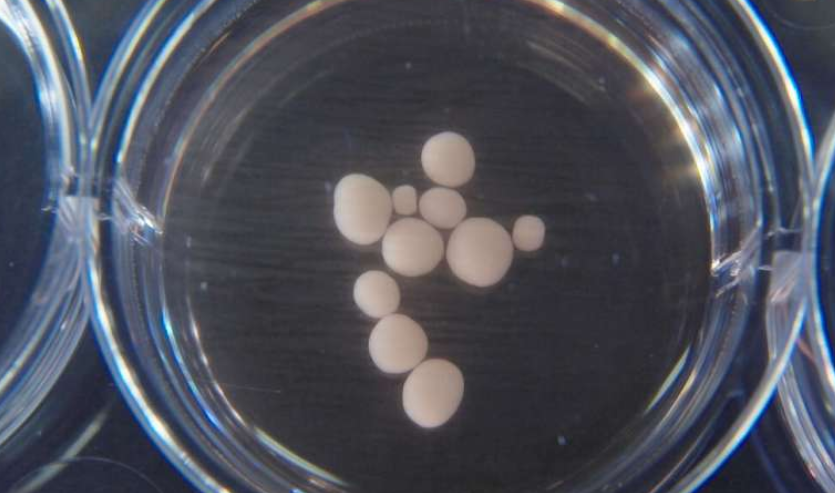Brain Waves Detected in Mini Brains Grown in a Dish

10 months old Pea Size brain organoids Image Courtesy: Phys.org.
A group of researchers and scientists have developed a miniature brain in laboratory dishes from human stem cells. Now, their report published in the journal Stem Cell suggests that the group could detect brain waves in these laboratory-grown brain cells.
These tiny brains, however, are a million times smaller than that of a human brain. Brain waves could be detected in them resembling those of preterm babies. The study was an attempt to understand how the brain develops.
The pea-sized brains called the cerebral organoids have been derived from human pluripotent stem cells. The pluripotent stem cells are the cell types that can differentiate into other cell types. These are derived from human embryos or human fetal tissue. The cerebral organoids are grown on laboratory dishes with an environment that mimics the environment of human brain development. The stem cells differentiate cell into different types of brain cells and then self-organise into a 3D structure that resembles the developing human brain.
"The level of neural activity we are seeing is unprecedented in vitro. We are one step closer to have a model that can actually generate these early stages of a sophisticated neural network,” said Alysson Muotri, the corresponding author of the study.
This is not the first time of growing brain cells in culture dishes in a laboratory. Scientists have previously grown organoids with cellular structures that are very similar to the human brain. But all the previous attempts failed to develop a neural network that is human-like and functioning. The neural networks emerge when neurons become mature and interconnected, and this phenomenon is the hallmark of almost all brain activities.
“You can use brain organoids for several things, including understand normal human neurodevelopment, disease modeling, brain evolution, drug screening, and even to inform artificial intelligence," Muotri said.
Muotri and his team could develop a better way to grow stem cells that included optimising the culture medium formula. This optimisation technique made their organoids grow more mature than the previous models. The team grew several hundred organoids for a period of 10 months and used multi-electrode array system to record their neural activities. The time period chosen was keeping in mind the time of pregnancy. They recorded the brain activities at different times.
The team found that the organoid produced bursts of brain waves at about two months. Interestingly, their brain wave recording revealed a stunning resemblance with the brain recording pattern seen in immature human brains. As time passed, and the organoids continued to grow, they produced brain waves at different frequencies and the signals appeared more regularly. These results suggest that organoids have developed neural networks with age.
“This is a result of having more functional synapses, and you are forming more connections between the neurons. The interactions between neurons contribute to signals at various frequencies,” said Muotri.
However, the recordings and the brain wave detection in the organoids, in no way mean that they represent mental activities such as consciousness.
To compare the brain wave emanated from the organoids with those of the early brain development, the team developed a computational method where a machine learning algorithm was designed to record brain waves from 39 premature babies between six and nine and a half months old. The algorithm was able to tell how many weeks the organoids have grown in the culture suggestive of the fact that organoids and human brains share a similar growth pattern.
Explaining the rudimentary nature of the findings, Muotri said, “"It might be that in the future, we will get something that is really close to the signals in the human brains that control behaviors, thoughts, or memory. But I don't think we have any evidence right now to say we have any of those."
Get the latest reports & analysis with people's perspective on Protests, movements & deep analytical videos, discussions of the current affairs in your Telegram app. Subscribe to NewsClick's Telegram channel & get Real-Time updates on stories, as they get published on our website.















